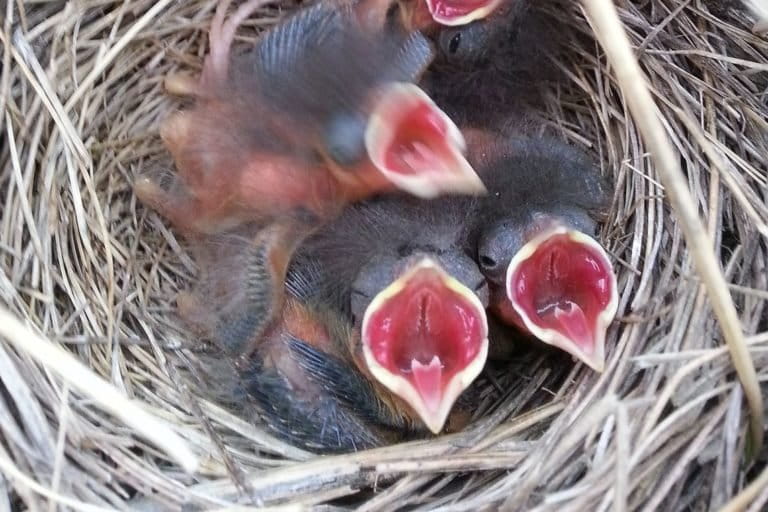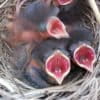“It’s easy to quantify if insects are dead,” said Harvard post-doctoral fellow James Crall, lead author of the recent study “Neonicotinoid exposure disrupts bumblebee nest behavior, social networks, and thermoregulation.”…
Researchers have developed a web-based application to enable citizen scientists to listen to the sounds of killer whales in the northeast Pacific in real time. Publicly launched on Nov. 1,…
OK, Google: Has the general public lost interest in biodiversity conservation? Has people’s interest in environmental issues been overshadowed by climate change alone? The answer to both questions, according to…
Most of Kenya is arid, and lengthy droughts can lead to livestock loss, illegal grazing in protected areas, and violent interactions between nomadic herders and other landowners. Less known are…
Botswana’s policy of zero tolerance for poaching and illegal hunting has given it the reputation of valuing wildlife conservation. But an increase in human-wildlife conflict in recent years appears to…
NYERI, Kenya - It took nine hours for Margaret Wanjugu and neighbors to put out a fire that razed Gathorongai forest near her home in central Kenya, in 2016. She…
According to research released yesterday, small-scale gold mining has led to the destruction of more than 170,000 acres of primary rainforest in the Peruvian Amazon over the past five years.…
In a high-rise just across the Hudson River from Manhattan, a conference room echoed of clacking keyboards as fluorescent lamps glared down on whiteboard scribbles and hunched shoulders. This was…
An extensive study of the leopard population in the wildlife-rich southern Indian state of Karnataka has indicated that these big cats are thriving there, buoying hopes the species’ genetic pool…
An international team of scientists has developed a method to assess the detection area of acoustic monitoring devices. These instruments, which can record the calls and other sounds of animals…
When Osa Conservation project coordinator Juan Carlos Cruz met a local landowner angered by the presence of a pair of camera traps on his land in this southwestern section of…
Since the arrival of the fall armyworm (Spodoptera frugiperda) caterpillar in West Africa in early 2016, true to its name, it has been marching quickly and mercilessly through the continent,…
African elephants use areas of grassland, bushland, and woodland, but how do they move through these different vegetation types in different seasons, especially where water becomes a seasonally scarce resource?…
The iNaturalist species data- and image-sharing platform reached a milestone earlier this month with its one millionth observer. The platform consists of a mobile app and corresponding website that help…
A team of scientists has produced the most comprehensive assessment to date of trawling, a fishing technique that produces a sizable portion of the world’s seafood but is also seen…
Chief Antonio Manquid Jiménez, an elder and shaman of the Matsés tribe of northeastern Peru, hasn’t always used a smartphone to document what he finds during his hunting and gathering…
The non-profit Conservation X Labs (CXL) recently announced twenty finalists for the Con X Tech Prize – subtitled “Hacking Extinction.” The finalists will receive $3,500 to continue developing their projects,…
South American bats speak dialects different from those of their North American counterparts. In response, a group of scientists has developed the first artificial intelligence (AI) algorithm for acoustic identification…
The survey looked easy on paper. All they had to do was to go the Babai Valley in western Nepal and fly a drone (or unmanned aerial vehicle, UAV) along…
A team at University of Texas Austin has developed a new method for identifying whether a mosquito is of the Aedes aegypti species, which is responsible for transmitting Zika, dengue and other deadly diseases. The…
As early as 2009-10, researchers were looking at Twitter data mining as a way to predict the incidence of flu. At the time, the H1N1 virus, or “swine flu,” had…
Small animals form the majority of animal diversity on Earth, but there are fundamental gaps in our knowledge of how animals too small to wear GPS or satellite tracking tags…
Recent top stories from our Spanish-language service, Mongabay-Latam, revealed Peruvians’ hidden shark diet, new species in Colombia’s Chiribiquete National Park, dire predictions from Mexico’s “Batman,” and more. Peruvians are eating…
Illegal mining is destroying the Amazon. Most people know this, but it is chilling to see the destruction in aerial images that show details of the mining camps, trucks and…
MEDELLIN, Colombia — Keeping an eye on what is going on out in the vast countryside of Colombia’s palm oil plantations is a challenge. But that may be about to…
Every year, millions of baby birds leave the security of their nests, flying off into the uncertainty of the outside world. A single chick’s fledging takes just a moment, and…
The millions of waterbirds that migrate each spring from South America to as far as the Arctic can’t do it in one trip. They stop to rest and refuel several…
Last year, a loggerhead named Eliza Ann took the crown. This year, Lucaya, the speedy leatherback, has pulled ahead to take an early lead. Every summer, a handful of sea…
Data from satellite tracking tags deployed on elephants in Botswana, Namibia, Zambia and along the border of Angola and Zimbabwe have revealed that the Kavango Zambezi Transfrontier Conservation Area (KAZA…
In December 2015, officials from Nepal's Central Investigation Bureau had a hunch that something was amiss with the country’s tigers. The bureau, in the past few months, had seized more…
Working under cover of night in parks as large as US states, poachers are skilled in avoiding detection. If they kill with silencers on their rifles, the animal’s death is…
Watching a majestic tiger, elephant or leopard in the wilderness of Bandipur or Nagarhole National Park, is dream come true for many. Nestled on the foothills of southern India’s Western…




































































